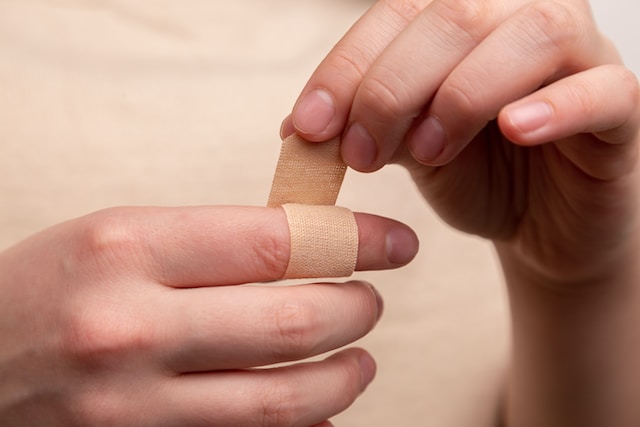All opinions are mine and mine alone.
Preventing Common Finger Injuries in Babies: Tips for Parents
As parents, ensuring the safety and well-being of our little ones is a top priority. Babies, with their natural curiosity and eagerness to explore the world around them, are prone to various mishaps, including finger injuries. In this pursuit, it’s crucial to pay attention to the often overlooked aspect of preventing finger injuries in babies. Those tiny, delicate fingers are magnets for curiosity, making it imperative for parents to be vigilant.

Let’s delve into the invaluable tips on safeguarding your bundle of joy from common finger injuries. A proactive approach to safety not only fosters a secure environment but also strengthens the parent-child bond, creating a foundation for trust and mutual growth.
In the following sections, we’ll explore practical strategies that blend seamlessly into your parenting journey, ensuring that each discovery is met with the assurance of a well-protected exploration.
Closely Supervise Playtime
During playtime, babies engage in activities that contribute to their physical and cognitive development. However, it’s crucial to closely supervise these activities to prevent accidents.
One common scenario involves babies putting their fingers in small openings, such as the ventilation holes of toys or other play items. To avoid potential finger injuries, opt for toys with larger openings and ensure that play areas are free from small objects that could pose a hazard.
Babies are naturally drawn to explore objects with their mouths, and this behavior can sometimes lead to finger injuries. To address this, choose toys that are specifically designed for their age group, minimizing the risk of small parts that can be detached and swallowed.
Be Cautious with Doors and Drawers
As babies begin to crawl and explore their surroundings, doors and drawers become potential sources of finger injuries. It’s not uncommon for tiny fingers to get caught in closing doors or drawers. In the realm of finger injuries, the mallet finger takes center stage. This injury occurs when an external force, such as a door or drawer, forcefully bends or jams the end of the finger. While this injury is typically not painful, it requires prompt attention to prevent long-term deformity.
To prevent such injuries, consider installing door stoppers and drawer locks. These simple yet effective measures create a protective barrier, minimizing the risk of accidents. Additionally, educate older siblings about the importance of closing doors and drawers gently to create a home environment that promotes mutual safety. Now, let’s take a closer look at the mallet finger and its implications.
Secure Furniture and Appliances
Babies are naturally curious, and their exploration extends beyond toys to include household items like furniture and appliances. Unsecured furniture poses a significant risk of falling on tiny fingers, leading to injuries. To prevent accidents, secure bookshelves, dressers, and kids’ furniture to the wall; they become stalwart protectors, firmly in place even during your little one’s most adventurous moments.
Additionally, avoid placing tempting items, such as toys or snacks, on top of furniture that might encourage your little one to climb. Moreover, consider rearranging furniture to create stable structures, minimizing the chances of accidental tip-overs. This strategic arrangement not only enhances safety but also fosters an environment where your baby can confidently navigate and explore without the worry of unsteady furniture.
Implement Baby-Proofing Measures
When it comes to baby-proofing, a comprehensive approach is key. Start by covering sharp furniture corners with corner guards, reducing the risk of injuries during inevitable bumps and falls—secure cabinets and drawers with childproof locks to prevent tiny fingers from accessing potentially harmful items.
Consider installing safety gates in strategic locations to restrict access to areas with potential hazards, such as staircases. This not only prevents falls but also adds an extra layer of protection for your baby. Furthermore, cover electrical outlets with safety plugs to minimize the risk of electrical injuries.
While it’s essential to focus on specific areas like doors and drawers, broadening your baby-proofing efforts ensures a holistic safety net for your child. Regularly assess your home for potential risks, adapting your baby-proofing measures as your little one grows and explores new spaces.
Final Words
In the grand tapestry of parenting, the safety of those miniature fingers is both an art and a science. Our exploration into the realms of playtime vigilance, the mastery of baby-proofing, and fortifying furniture and appliances provides a practical roadmap for parents seeking expert insights without unnecessary complexity.
As you navigate the exhilarating journey of parenthood, let these expert tips be your compass, ensuring that your little one’s exploration is not only a voyage of wonder but also one of safety and security. After all, in the realm of tiny fingers, knowledge is the ultimate shield against avoidable mishaps.



Speak Your Mind